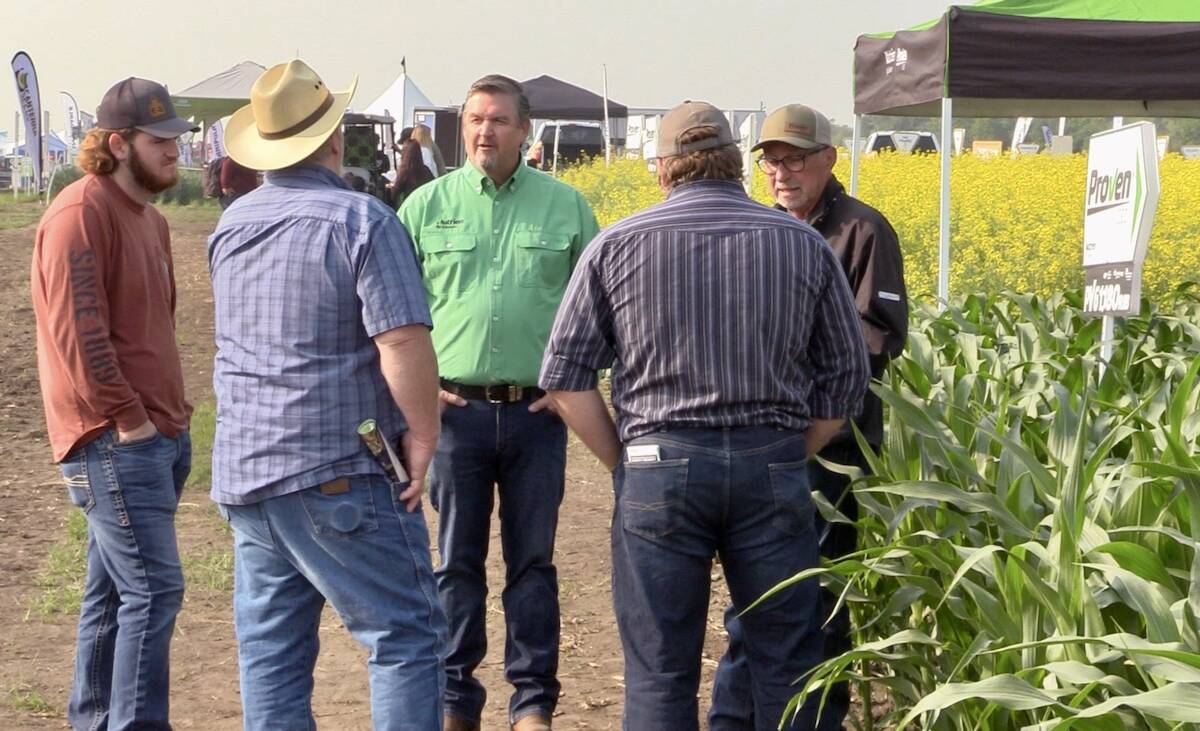Farmers who normally spray their wheat fields after harvest might be squeezed out of that window this year due to the lateness of the 2013 crop.
The windows for spraying could be closed by the time combines are off the fields, according to Curtis MacKinnon of Farmers Edge in Pilot Mound, Man.
“I certainly wouldn’t call it an opportunity for early weed control. Instead, I’d have to say it’s imperative to do pre-harvest desiccation this year,” says MacKinnon.
“If your fields need fall Roundup, there’s an added urgency this year to get it done as soon as possible, now, before harvest starts.”
Read Also

Interest in biological crop inputs continues to grow
It was only a few years ago that interest in alternative methods such as biologicals to boost a crop’s nutrient…
Some producers are reluctant to waste the cost of a pre-harvest glyphosate application because they think too many weeds are protected by the crop’s canopy.
MacKinnon says it’s not as much of a factor as people imagine. He says there is reduced efficacy with early spraying, but a producer will still get good value for the expenditure.
“Your wheat crop is senescing at this point, losing its leaves. So you do get good canopy penetration.
“Now, if you have a bunch of buckwheat, that’s a different problem. There’s a protective wax on the cuticle, so you know that’s a little tougher. Same with those low-profile dandelions. They’re trickier.
“But given our present circumstance, I’d spray now instead of later.”
Damage to standing crop is another reason producers often cite for not desiccating before harvest.
MacKinnon says crop loss can be a factor, but nearly all producers now operate with highly accurate autosteer systems which minimize that damage.
“If you co-ordinate the tire path of your desiccation spray operation with the tire path of your fungicide or other crop protection passes, you’ll likely see little or no new damage. The damage will have already been done earlier in the summer.”
If there is damage, the benefit of the desiccation will still be greater than the damage, MacKinnon says. Alternatively, farmers could hire an aerial applicator.
With 40 agronomists in the field, Farmers Edge is able to keep track of what’s happening with crops in most regions on the Prairies. MacKinnon reports that the recent bout of warm weather prompted a flush of late tillers.
“Those late tillers won’t contribute anything to your bottom line. Wheat fields have many variable stages of growth this year.
“You don’t want to slow down your harvest running that material through your combine. Another good reason to desiccate now.”
MacKinnon points out that the recent mid-August hot temperatures typically do not last long enough into September to cause a late wheat crop to mature naturally.
Early desiccation gives the grower a predictable uniform maturity that pays for itself when the combines enter the field.
“It’s just another management tool. It eliminates some negative possibilities and gives a grower better control over his operation.”















